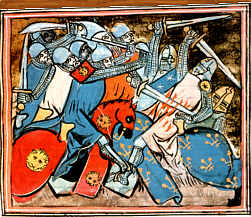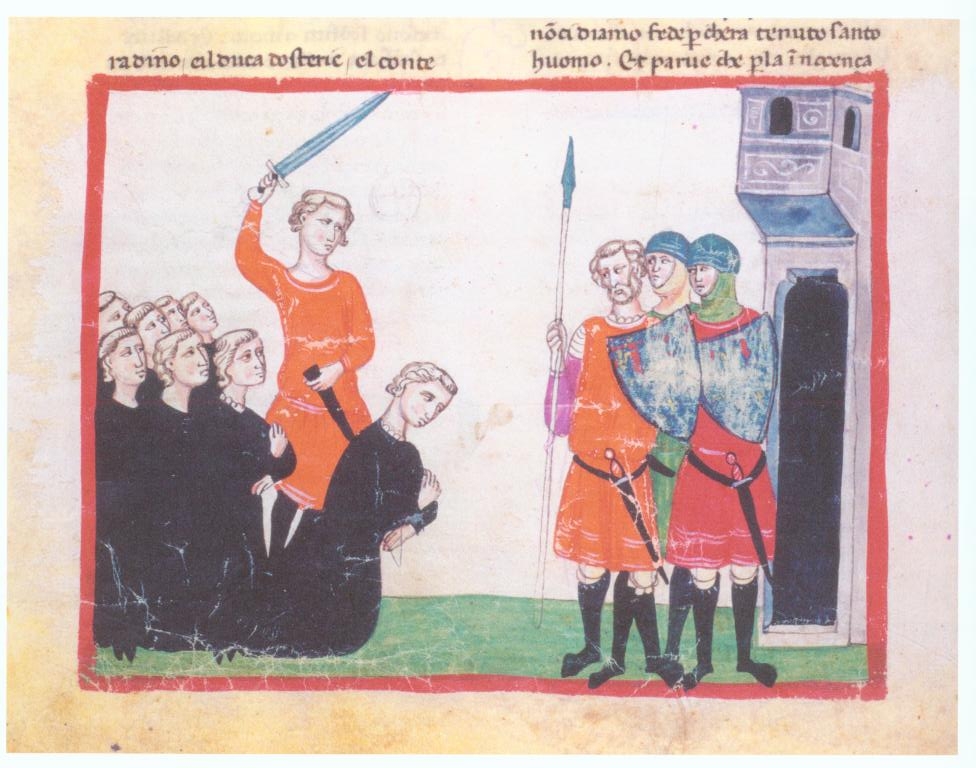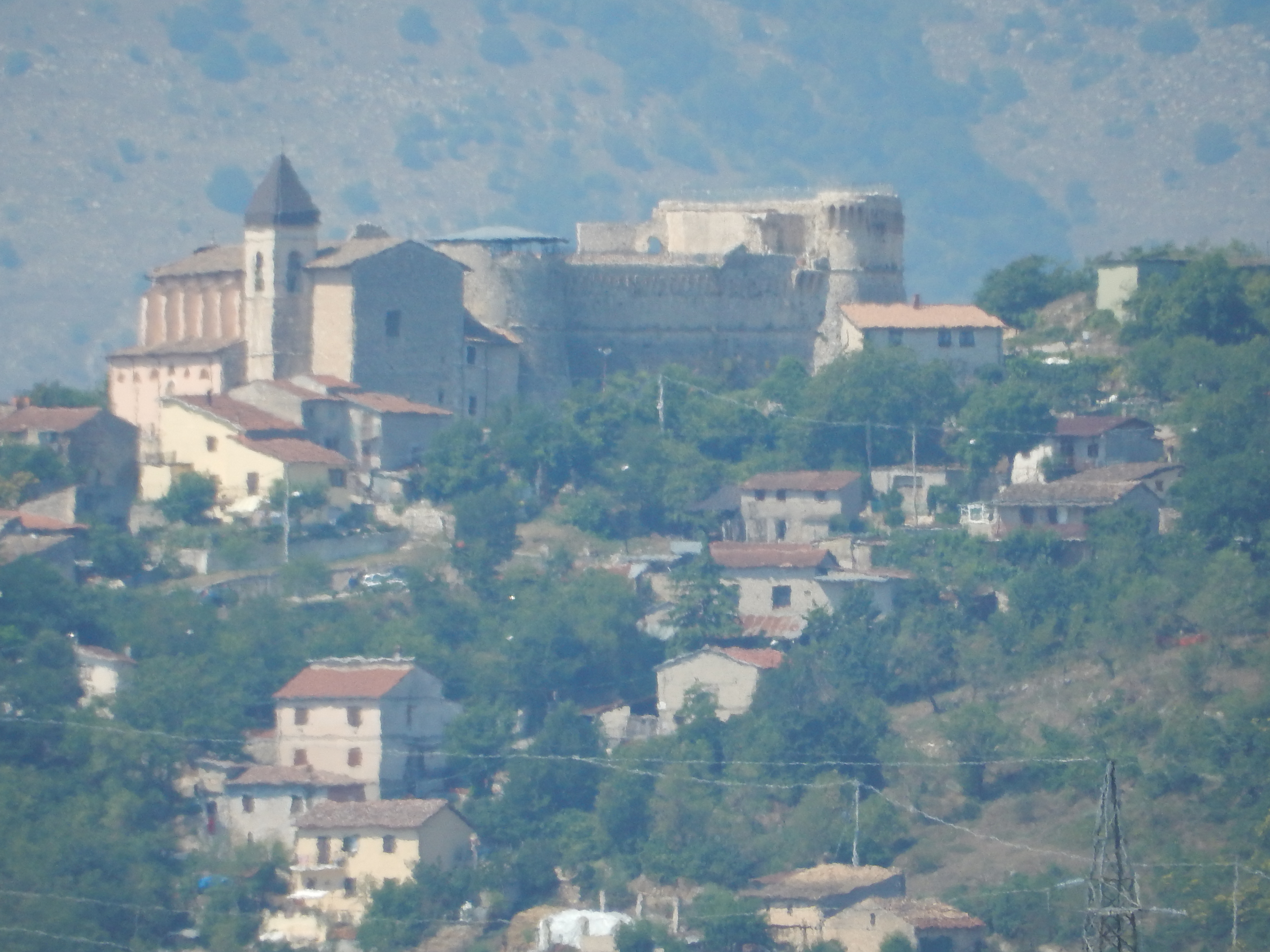|
Scurcola Marsicana
Scurcola Marsicana is a ''comune'' and town in the province of L'Aquila, in the Abruzzo region of central Italy. It is located at the feet of Mount San Nicola, on the western rim of the former Fucine Lake. History The most ancient findings of human presence in the area date from the 9th-8th centuries BC. The name is of Lombard origin, and is first mentioned around 1150 AD. In the nearby, in the Palentine Plains ( it, Piani Palentini), was fought the Battle of Tagliacozzo between Conradin of Hohenstaufen and Charles I of Anjou. The city was also the seat of a massacre of the local population by the Piedmontese troops in the aftermath of the unification of Italy. Main sights *Church of ''Sant'Egidio'' *Church of ''Sant'Antonio'' *Church of ''SS. Trinità'' *Church of ''Maria SS. della Vittoria'' * Abbey of ''Santa Maria della Vittoria'' *Castello Orsini (Orsini Castle) Twin towns * Passau Passau (; bar, label=Central Bavarian, Båssa) is a city in Lower Bavaria, Germany, ... [...More Info...] [...Related Items...] OR: [Wikipedia] [Google] [Baidu] |
Abruzzo
Abruzzo (, , ; nap, label=Neapolitan language, Abruzzese Neapolitan, Abbrùzze , ''Abbrìzze'' or ''Abbrèzze'' ; nap, label=Sabino dialect, Aquilano, Abbrùzzu; #History, historically Abruzzi) is a Regions of Italy, region of Southern Italy with an area of 10,763 square km (4,156 sq mi) and a population of 1.3 million. It is divided into four provinces: Province of L'Aquila, L'Aquila, Province of Teramo, Teramo, Province of Pescara, Pescara, and Province of Chieti, Chieti. Its western border lies east of Rome. Abruzzo borders the region of Marche to the north, Lazio to the west and north-west, Molise to the south and the Adriatic Sea to the east. Geographically, Abruzzo is divided into a mountainous area in the west, which includes the highest massifs of the Apennines, such as the Gran Sasso d'Italia and the Maiella, and a coastal area in the east with beaches on the Adriatic Sea. Abruzzo is considered a region of Southern Italy in terms of its culture, language, history, ... [...More Info...] [...Related Items...] OR: [Wikipedia] [Google] [Baidu] |
Battle Of Tagliacozzo
The Battle of Tagliacozzo was fought on 23 August 1268 between the Ghibelline supporters of Conradin of Hohenstaufen and the Guelph army of Charles of Anjou. The battle represented the last act of Hohenstaufen power in Italy. The capture and execution of Conradin a couple of months after the battle also marked the fall of the family from the Imperial and Sicilian thrones, leading to the new chapter of Angevin domination in Southern Italy. Antecedents The German emperors of the Hohenstaufen line, who had inherited the kingdom of Sicily from its Norman rulers in 1197, had continually attempted to consolidate their more long-standing claims to northern Italy as well—an ambition which was vehemently opposed by many northern Italian states and by the Papacy. The resulting struggle between the Papacy and the Holy Roman Empire split the loyalties of many Italians and led to factionalism, the resulting factions being termed the Guelphs and Ghibellines. The death of the German empe ... [...More Info...] [...Related Items...] OR: [Wikipedia] [Google] [Baidu] |
Passau
Passau (; bar, label=Central Bavarian, Båssa) is a city in Lower Bavaria, Germany, also known as the Dreiflüssestadt ("City of Three Rivers") as the river Danube is joined by the Inn from the south and the Ilz from the north. Passau's population is approx. 50,000, of whom about 12,000 are students at the University of Passau, renowned in Germany for its institutes of economics, law, theology, computer science and cultural studies. History In the 2nd century BC, many of the Boii tribe were pushed north across the Alps out of northern Italy by the Romans. They established a new capital called Boiodurum by the Romans (from Gaulish ''Boioduron''), now within the Innstadt district of Passau. Passau was an ancient Roman colony called Batavis, Latin for "for the ''Batavi''." The Batavi were an ancient Germanic tribe often mentioned by classical authors, and they were regularly associated with the Suebian marauders, the Heruli. ''Batavis'' (Passau-Altstadt) was a Roman castrum in ... [...More Info...] [...Related Items...] OR: [Wikipedia] [Google] [Baidu] |
Orsini Family
The House of Orsini is an Italian noble family that was one of the most influential princely families in medieval Italy and Renaissance Rome. Members of the Orsini family include five popes: Stephen II (752-757), Paul I (757-767), Celestine III (1191–1198), Nicholas III (1277–1280), and Benedict XIII (1724–1730). In addition, the family included 34 cardinals, numerous ''condottieri'', and other significant political and religious figures. Origins According to their own family legend, the Orsini are descended from the Julio-Claudian dynasty of ancient Rome. The Orsini carried on a political feud with the Colonna family for centuries in Rome, until it was stopped by Papal Bull in 1511. In 1571, the heads of both families married nieces of Pope Sixtus V as an act of reconciliation. Ironically the Colonna family also claims descent from the Julio-Claudian dynasty of ancient Rome. The Orsini descend from Cajo Orso Orsini who lived c. 600 CE. Five popes are descended f ... [...More Info...] [...Related Items...] OR: [Wikipedia] [Google] [Baidu] |
Rocca Orsini
Rocca Orsini (Italian for ''Stronghold of Orsini family'') is a Middle Ages castle in Scurcola Marsicana, Province of L'Aquila (Abruzzo). History Rocca Orsini is located on the highest part of Scurcola Marsicana. It is composed by different structures belonging to different ages. The oldest part was built by the De Pontibus family and dates back to the 13th century; it is a Norman-Swabian enclosure castle with a structure similar to many other fortifications in the area of L'Aquila, like Castle of San Pio delle Camere. The structure of the castle was based on a pentagonal tower placed at the higher top and a wall with a triangular plant leading down to the valley. Historical sources confirm the existence of this castle (named "castrum Sculcule") during the battle of Tagliacozzo in 1268 between Conradin and Charles I of Naples. The transformation of the castle in Renaissance fortress took place in the late 15th century by the Orsini family. Gentile Virginio Orsini, Count of Tag ... [...More Info...] [...Related Items...] OR: [Wikipedia] [Google] [Baidu] |
Santa Maria Della Vittoria, Scurcola Marsicana
The Abbey of Santa Maria della Vittoria (Italian: ''L’abbazia di Santa Maria della Vittoria'') was a Cistercian monastery located in Scurcola Marsicana, Province of L'Aquila, Italy. History The abbey was built by Charles I of Naples to celebrate the victory in the Battle of Tagliacozzo against Conradin, to control the Kingdom of Sicily. The construction started in 1274, and in 1277 the abbey hosted the first monks. Mother abbey of Santa Maria della Vittoria was the Louroux Abbey in Vernantes (Anjou), places of origin of large part of the soldiers involved in the battle. The church was consecrated on May 12, 1278 and it was definitively completed in 1282. Architecture Nowadays the abbey is completely destroyed. Two portals of the original church can be found in different churches of Scurcola Marsicana: the new church of Santa Maria della Vittoria, close to the Rocca Orsini, and the Sant’Antonio church, along the Via Tiburtina. See also * List of Cistercian monasteries ... [...More Info...] [...Related Items...] OR: [Wikipedia] [Google] [Baidu] |
Unification Of Italy
The unification of Italy ( it, Unità d'Italia ), also known as the ''Risorgimento'' (, ; ), was the 19th-century Political movement, political and social movement that resulted in the Merger (politics), consolidation of List of historic states of Italy, different states of the Italian Peninsula into a Proclamation of the Kingdom of Italy, single state in 1861, the Kingdom of Italy. Inspired by the rebellions in the 1820s and 1830s against the outcome of the Congress of Vienna, the unification process was precipitated by the Revolutions of 1848, and reached completion in 1871 after the Capture of Rome and its designation as the capital of the Kingdom of Italy. Some of the states that had been targeted for unification (''Italian irredentism, terre irredente'') did not join the Kingdom of Italy until 1918 after Italy defeated Austria-Hungary in the First World War. For this reason, historians sometimes describe the unification period as continuing past 1871, including activities ... [...More Info...] [...Related Items...] OR: [Wikipedia] [Google] [Baidu] |
Charles I Of Anjou
Charles I (early 1226/12277 January 1285), commonly called Charles of Anjou, was a member of the royal Capetian dynasty and the founder of the Capetian House of Anjou, second House of Anjou. He was Count of Provence (1246–85) and County of Forcalquier, Forcalquier (1246–48, 1256–85) in the Holy Roman Empire, Count of Anjou and Count of Maine, Maine (1246–85) in France; he was also King of Sicily (1266–85) and Prince of Achaea (1278–85). In 1272, he was proclaimed Kingdom of Albania (medieval), King of Albania, and in 1277 he purchased a claim to the Kingdom of Jerusalem. The youngest son of Louis VIII of France and Blanche of Castile, Charles was destined for a Church career until the early 1240s. He acquired Provence and Forcalquier through his marriage to their heiress, Beatrice of Provence, Beatrice. His attempts to restore central authority brought him into conflict with his mother-in-law, Beatrice of Savoy, and the nobility. Charles received Anjou and Maine from ... [...More Info...] [...Related Items...] OR: [Wikipedia] [Google] [Baidu] |
Hohenstaufen
The Hohenstaufen dynasty (, , ), also known as the Staufer, was a noble family of unclear origin that rose to rule the Duchy of Swabia from 1079, and to royal rule in the Holy Roman Empire during the Middle Ages from 1138 until 1254. The dynasty's most prominent rulers – Frederick I (1155), Henry VI (1191) and Frederick II (1220) – ascended the imperial throne and also reigned over Italy and Burgundy. The non-contemporary name of 'Hohenstaufen' is derived from the family's Hohenstaufen Castle on the Hohenstaufen mountain at the northern fringes of the Swabian Jura, near the town of Göppingen. Under Hohenstaufen rule, the Holy Roman Empire reached its greatest territorial extent from 1155 to 1268. Name The name Hohenstaufen was first used in the 14th century to distinguish the 'high' (''hohen'') conical hill named Staufen in the Swabian Jura (in the district of Göppingen) from the village of the same name in the valley below. The new name was only applied to the hill ... [...More Info...] [...Related Items...] OR: [Wikipedia] [Google] [Baidu] |
Conradin
Conrad III (25 March 1252 – 29 October 1268), called ''the Younger'' or ''the Boy'', but usually known by the diminutive Conradin (german: link=no, Konradin, it, Corradino), was the last direct heir of the House of Hohenstaufen. He was Duke of Swabia (1254–1268) and nominal King of Jerusalem (1254–1268) and Sicily (1254–1258). After his attempt to reclaim the Kingdom of Sicily for the Hohenstaufen dynasty failed, he was captured and beheaded. Early childhood Conradin was born in Wolfstein, Bavaria, to Conrad IV of Germany and Elisabeth of Bavaria. Though he never succeeded his father as Roman-German king, he was recognized as king of Sicily and Jerusalem by supporters of the Hohenstaufens in 1254. Having lost his father in 1254, he grew up at the court of his uncle and guardian, Louis II, Duke of Bavaria. His guardians were able to hold Swabia for him. Jerusalem was held by a relative from the royal house of Cyprus as regent. In Sicily, his father's half-brother M ... [...More Info...] [...Related Items...] OR: [Wikipedia] [Google] [Baidu] |
Palentine Plains
The () are a plateau in upper Marsica, a subregion of Abruzzo, in central Italy. Description The plains, located between a.s.l., are surrounded by mountain reliefs such as those of the Sirente-Velino group, Mount San Nicola, the Mount Bove massif ( Carseolan Mountains), and the Mount Salviano range. Mounts Aurunzo and Girifalco separate the plains from the Nerfa Valley. This plateau is adjacent to the Fucino plain in the east, and to the upper Cicolano valley in the northwest part, falling within the territories of the municipalities of Avezzano, Capistrello, Magliano de' Marsi, Scurcola Marsicana, and Tagliacozzo. The small Terramone depression, situated between the Cappelle dei Marsi and Magliano de' Marsi territories, is part of the area. The plateau is mostly for agricultural use. Origin of the name The origin of the name is not clear. According to one hypothesis, it would be related to Pales, a deity of Roman mythology, protecting shepherds, flocks and livestock. ... [...More Info...] [...Related Items...] OR: [Wikipedia] [Google] [Baidu] |
Province Of L'Aquila
The Province of L'Aquila ( it, Provincia dell'Aquila) is the largest, most mountainous and least densely populated province of the Abruzzo region of Central Italy. It comprises about half the landmass of Abruzzo and occupies the western part of the region. It has borders with the provinces of Teramo to the north, Pescara and Chieti to the east, Isernia (in Molise region) to the south and Frosinone, Rome and Rieti (in Lazio region) to the west. Its capital is the city of L'Aquila. The province of L'Aquila includes the highest mountains of the Apennines (Gran Sasso, Maiella and Velino-Sirente), their highest peak, Corno Grande, the high plain of Campo Imperatore, and Europe's southernmost glacier, the Calderone. The province's major rivers are the Aterno-Pescara, Sangro, Liri, Salto, and the Turano; its major lakes are Lago Scanno and Lago Barrea. It once included the largest lake on the Italian peninsula, Lago Fucino, which was drained in one of the 19th century's largest en ... [...More Info...] [...Related Items...] OR: [Wikipedia] [Google] [Baidu] |







